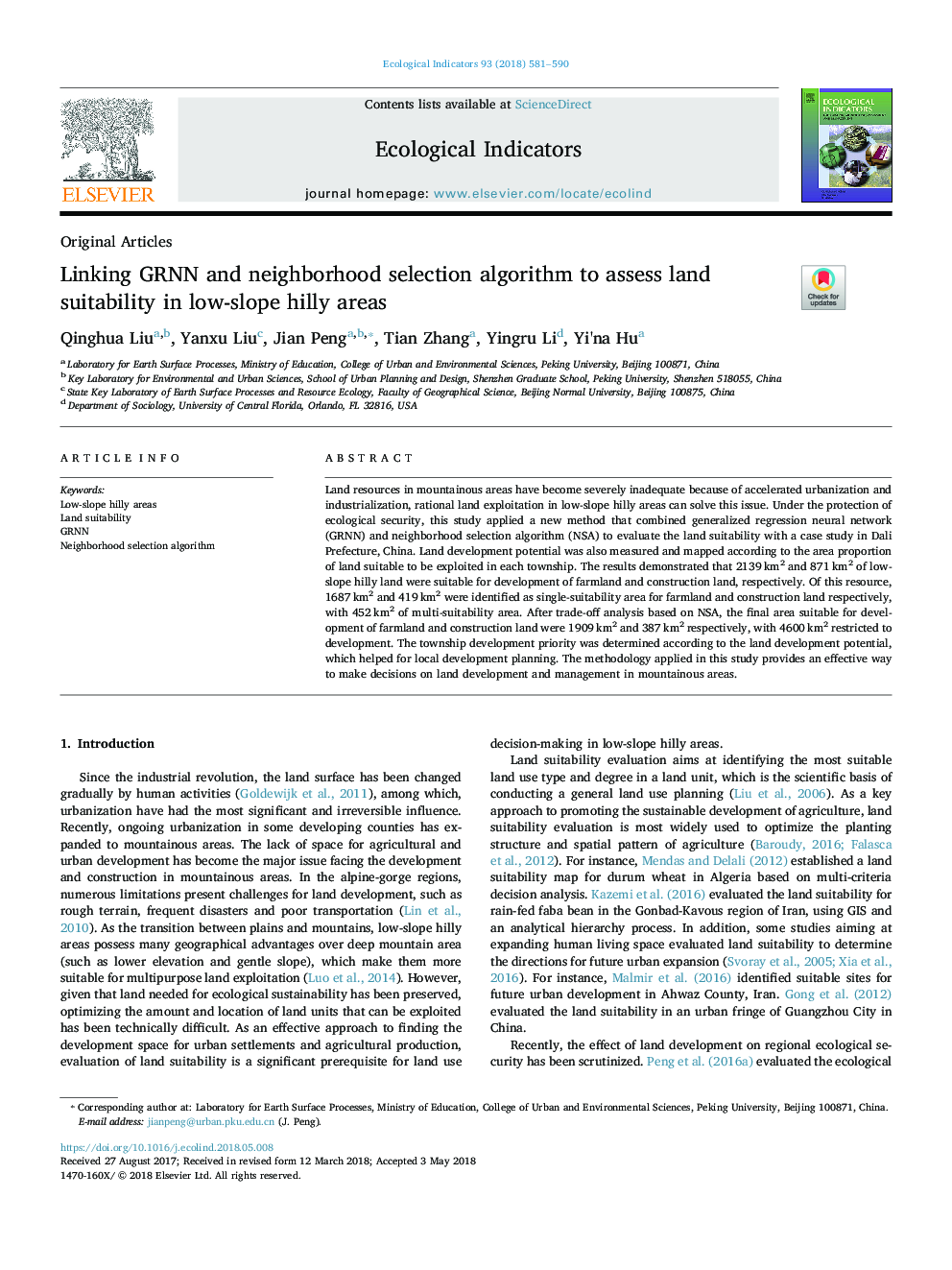| Article ID | Journal | Published Year | Pages | File Type |
|---|---|---|---|---|
| 8845183 | Ecological Indicators | 2018 | 10 Pages |
Abstract
Land resources in mountainous areas have become severely inadequate because of accelerated urbanization and industrialization, rational land exploitation in low-slope hilly areas can solve this issue. Under the protection of ecological security, this study applied a new method that combined generalized regression neural network (GRNN) and neighborhood selection algorithm (NSA) to evaluate the land suitability with a case study in Dali Prefecture, China. Land development potential was also measured and mapped according to the area proportion of land suitable to be exploited in each township. The results demonstrated that 2139â¯km2 and 871â¯km2 of low-slope hilly land were suitable for development of farmland and construction land, respectively. Of this resource, 1687â¯km2 and 419â¯km2 were identified as single-suitability area for farmland and construction land respectively, with 452â¯km2 of multi-suitability area. After trade-off analysis based on NSA, the final area suitable for development of farmland and construction land were 1909â¯km2 and 387â¯km2 respectively, with 4600â¯km2 restricted to development. The township development priority was determined according to the land development potential, which helped for local development planning. The methodology applied in this study provides an effective way to make decisions on land development and management in mountainous areas.
Keywords
Related Topics
Life Sciences
Agricultural and Biological Sciences
Ecology, Evolution, Behavior and Systematics
Authors
Qinghua Liu, Yanxu Liu, Jian Peng, Tian Zhang, Yingru Li, Yi'na Hu,
